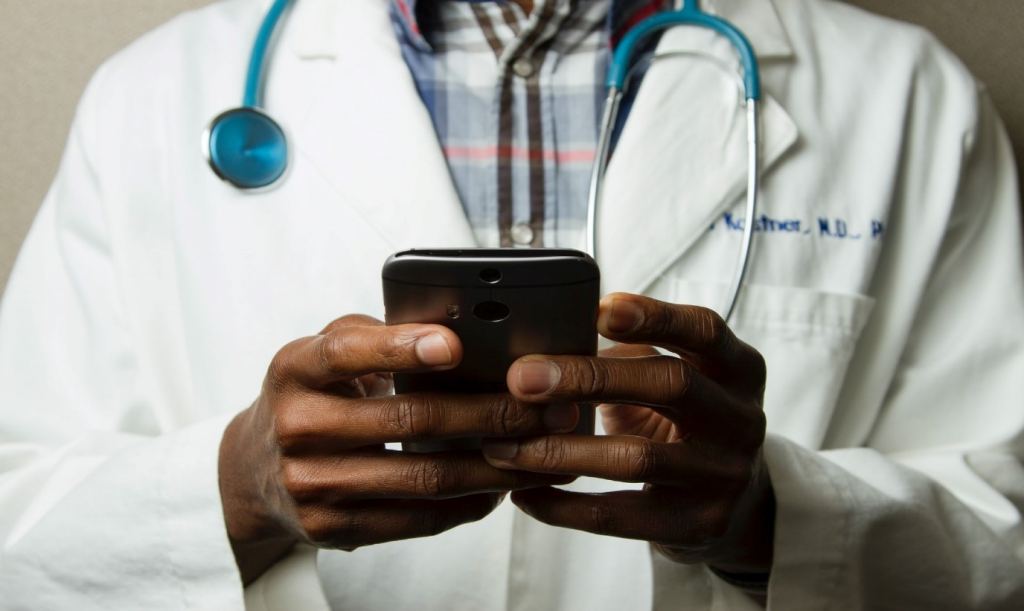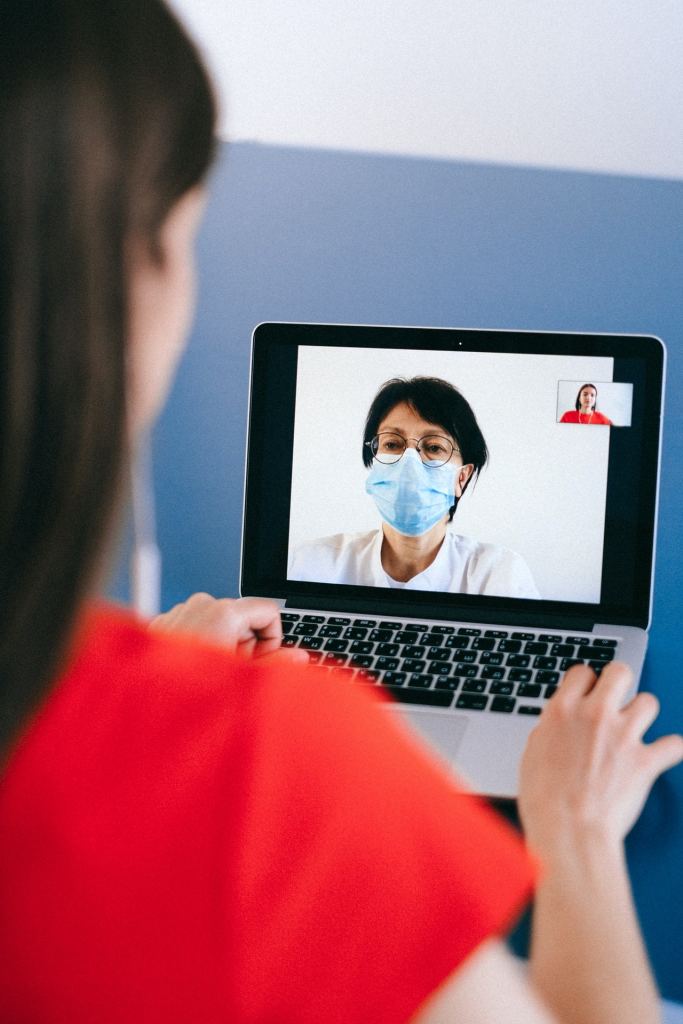
Teleconsultation is a new dawn for health service delivery
(Source: https://unsplash.com/photos/L8tWZT4CcVQ)
Medicine has always been hailed as a practice. Healthcare providers envision it as a hands-on career that entails physical rather than virtual presence. Previously, there have been very few instances, if any, that demanded virtual consultation between a healthcare provider and the patient. Even in the deadliest epidemics and pandemics such as Ebola and Marburg virus outbreaks, medical consultation was conducted physically. However, the current COVID-19 pandemic appears to be changing that narrative.
Telemedicine and teleconsultation are getting the nod due to the sustained lockdowns. Moreover, the insistence on the physical and social distancing does not exempt healthcare facilities, so patients are expected to rely on alternatives. One such option is teleconsultation.
Why Healthcare Providers were Reluctant to Advance in Telehealth
Before the COVID-19 pandemic outbreak, many healthcare providers were not very engaged working in telehealth, telemedicine, and teleconsultation. A number of factors aided this;
- Lack of familiarity with technology. Many health service providers understand and take practice as hands-on practice. Even in training, little emphasis is given to information technology and related disciplines. As a result, the majority of healthcare providers have little regard for the use of technology in healthcare. Some of them cannot operate the gadgets to practice virtually, while others cannot comprehend how it will be effective given the statutes of medical practice. These factors, among others, have led to health service providers venturing less into a technology-driven practice.
- Lack of confidence in the use of technology in health care. In training for health service providers, most of the focus is on hands-on work and apparatus. A health service provider understands that they have to interact one-on-one with the patient to diagnose, perform a procedure, etc. This de facto knowledge has crippled the advent of technology in practice, as many practitioners have their reservations about using technology-driven medical practices. The majority of the health service providers do not trust technology to help in furthering the reach of medical practice apart from some health care equipment.
- Unavailability of technology. The economic and infrastructural imbalance in many parts of the world is a big blow to better health service delivery programs. Lack of proper road networks, electricity, and telecommunication services is a significant setback in the majority of places. Technology companies are unable to set-up the necessary equipment to help in advancing health services. The healthcare providers have no option in this situation but to rely on the traditional face-to-face practice with the patients.
- Lack of proper clinical work processes. The organization of operations at the healthcare facility should warrant the planning of health information to the patients. However, health institutions are not adequately equipped to offer such timely calls. For instance, lab results could be discussed with the patient virtually through video calls. However, most facilities did not have that privilege.
Why the Situation Has Changed
The highly contagious novel coronavirus outbreak has resulted in an unmistakable paradigm shift in the healthcare sector. With most of the governments imposing lockdowns in severely stricken areas, the health-seeking behavior was affected. To get to reach their patients, health service providers had to rely on teleconsultation through video calls. In addition, the pandemic also necessitated the need for social and physical distancing, which meant clearing of the waiting bays in hospitals and the majority of the outpatient departments. Teleconsultation is gaining momentum as health care providers realize it is not that difficult or bad at all.
Importance of Teleconsultation

Teleconsultation reduces the need to travel
(Source: https://unsplash.com/photos/3sY92eKV6-Y)
Teleconsultation has a number of benefits to both health care providers and patients; for healthcare providers:
- It accelerates pre-hospital decision-making and productivity. Teleconsultation enables the health service provider to make an informed decision about a patient even before they get to the hospital. The consultation is done virtually, and the health service provider determines whether to admit or manage the patient from their home through a remote consultation. Overall, patients’ management is hastened as they do not have to travel to the hospital for consultation.
- Optimizes hospital outpatient clinic efficiency. By interacting with patients virtually, many of them do not have to visit the outpatient clinic for consultations. Therefore, teleconsultation augments other health facility processes by handling patients from their remote locations before they make the visit to the hospital. This reduces congestion in the outpatient clinic, and the patients who report to the clinic can be attended to faster. The ease of work at the outpatient clinic is a big relief for health service providers.
- Cost savings through higher efficiencies. With improved efficiency at the health care facility, the cost of offering health services is significantly reduced. Teleconsultation has revolutionized health practice by increasing the efficiency of service delivery. The result has been reduced spending by the facilities, as some procedures and follow-up consultations can be switched to video calls. Sending the patient to the right department from a pre-hospital decision, saves the Emergency Department, outpatient clinics and healthcare administrators time and precious staff resources. Tests are minimized until necessary. Patients are less likely to cancel appointments as they have the convenience of the consultation where they are located, without having to travel. With the reduction in spending, the healthcare facility makes profits and performs better at delivering services.
- Avoids unnecessary travel. The essence of teleconsultation is minimizing face-to-face contact with patients while providing ongoing quality healthcare. Video calls replace the physical contact between the patient and the health service provider. The need for a health care provider to travel to follow up patients is eliminated. Besides cutting operational costs, this increases efficiency as the health service provider can attend to several patients in a day remotely.
Teleconsultation is taking the toll with increased technology

(Source: https://www.pexels.com/photo/people-having-a-video-call-4225881/)
Teleconsultation also benefits the patient in a number of ways;
- Faster treatment. With teleconsultation, a patient enjoys the benefits of faster treatment since they get medical attention remotely without having to travel to and from the hospital. The system is efficient, and the processes done are time-saving. Faster access to health services is a privilege many patients did not have access to.
- They have improved patient outcomes. With teleconsultation augmenting telehealth systems, the patient follow-ups have been made more comfortable than before. Post-procedure assessment of patients and monitoring progress ensures a better outcome for them.
- Supports remote treatment of patients. Teleconsultation has augmented the existing healthcare systems by ensuring health services can be accessed remotely. This widens the accessibility of health services and ensures that patients reduce the need to travel looking for health services. It is part of the efficiency that benefits the patients in systems that use teleconsultation.
- Avoids unnecessary travel. The patient is exempted from the need to travel to the health facility to seek medical attention. With teleconsultation, access to health is reduced to a video call away. Reduced travel works in favour of the patient as the medical attention is accessed remotely. Besides, travel costs are a burden to the patients, not to mention traffic-dependent delays.
Conclusion
The inevitable revolution of health service delivery is finally unrolling with the realization of teleconsultation. A technology that many health service providers were skeptical about, is becoming a life saver in the middle of a worldwide pandemic. In review, teleconsultation brings more to the table for both the health service providers and the patients. Improving the efficiency of health service delivery is a milestone that both the patients and healthcare providers have been wishing for. With teleconsultation, the privileges are now being shared.
RedZinc provides 3 types of products for teleconsultations, BlueEye Clinic for healthcare professionals to consult with patients and colleagues, BlueEye Handsfree for healthcare professionals on the move such as paramedics and community nurses, to consult with colleagues for medical expertise and BlueEye First for call centres to contact emergency callers through a video link. Request a free trial of our BlueEye Clinic or contact us to get a demo of the BlueEye Handsfree device or BlueEye First software.
It’s only a matter of time before teleconsultation is made a worldwide affair. Many other benefits are to be realized with the continued use of teleconsultation.
The pandemic was just the catalyst!

